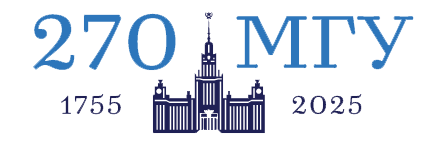You are here
Department of Automation for Scientific Research
Acting Head of the department: Popov Alexander, Academician of RANS, Fellow of American Physical Society, Professor, Dr.Sc.
The Department of Automation for Scientific Research (ASR) was founded in 1988 on the basis of a research and teaching group from the Department of Mathematical Physics (the former Department of Computational Mathematics). The founder and permanent head of the ASR Department is Academician of RAS Dmitry P. Kostomarov. Under his guidance the department performs a wide spectrum of research in the field of computer simulation of complex systems and processes.
Nowadays the ASR Department of the CMC Faculty of Lomonosov MSU is specializing in main scientific fields of the supercomputer and high-performance simulation for different complicated processes in physics and biochemistry.
The first area for the scientific research is the simulation of very strong and ultrashort laser pulses with plasma. The main method is a particle-in-cell method in the real geometry.
The second area is the numerical solving of quantum chemistry problems in particular the simulation of molecular switches of a new type. These problems are at the frontier of modern computational nanotechnologies and science.
The third area is the simulation of mass-spectrometers with the trap of a new type which can be an important and effective tool for proteomics.
Investigations of the professors and researchers, PhDs and undergraduate students are supported by numerous grants of the President of the Russian Federation, of the Russian Foundation for Basic Research (RFBR) and by grants of several transnational enterprises. The results have been presented at high-rated international conferences. The top-level studies in computational physics are performed in collaboration with the leading Russian scientific centers (Kurchatov Institute for Atomic Energy, Prokhorov General Physics Institute RAS, Institute for Energy Problems in Chemical Physics RAS) and lots of foreign universities and scientific institutions (University of Pisa, Italy; Advanced Photon Research Center, Japan Atomic Energy Agency; Institute for Atomic and Molecular Physics, Netherlands; Purdue University, USA).
Staff Members:
- Dnestrovskiy Yury, Academician of RANS, Professor, Dr.Sc.
- Zaitsev Feodor, Professor, Dr.Sc.
- Shishkin Aleksey, Associate Professor, Dr.Sc.
- Echkina Evgeniya, Associate Professor, PhD
- Zotov Igor, Associate Professor, PhD
- Inovenkov Igor, Associate Professor, PhD
- Nefedov Vladimir, Associate Professor, PhD, Scientific Secretary of the Department
- Smirnov Alexander, Associate Professor, PhD
- Sychugov Dmitry, Associate Professor, Dr.Sc.
- Shagirov Eldar, Associate Professor, PhD
- Yershov Nikolay, Senior Research Fellow, PhD
- Lukyanitsa Andrey, Senior Research Fellow, PhD
- Ufimtsev Michael, Senior Research Fellow, PhD
- Filippychev Dmitry, Senior Research Fellow, PhD
- Shmelev Aleksey, Senior Research Fellow, PhD
- Sheina Elena, Research Fellow, PhD
- Suchkov Egor, Assistant Professor, PhD
- Semenov Aleksey, Researcher, PhD
- Stepanov Sergey, Researcher
Regular courses (general faculty’s courses):
- Introduction to Numerical Methods, the fall semester (2 hours a week).
- Mathematical Physics Equations, the fall and spring semesters (2 hours a week, supported by seminars 2 hours a week).
Special courses:
- Software Development for Computational Problems by Prof. Zaitsev, 5th semester (4 hours a week).
- Data Analysis Methods by Dr. Ufimtsev, 5th semester (2 hours a week).
- Computational Physics and Nanotechnology by Prof. Popov, 7th and 8th semesters (2 hours a week).
- Visualization in Scientific Research by Assoc. Prof. Inovenkov, 7th semester (2 hours a week, accompanied by special computer assignments 2 hours a week).
- Mathematical Models for Dynamic Processes in Economics and the Financial Risks Theory by Assoc. Prof. Nefedov, 8th semester (2 hours a week).
- Computational Algorithms for Financial Data Analysis by Assoc. Prof. Zotov, 9th semester (2 hours a week).
- Unidimensional and Multivariate Statistical Analysis Methods by Dr. Ufimtsev, one year special course for students of senior courses (2 hours a week).
Main Scientific Directions and Special scientific seminars:
The use of computational physics models in interdisciplinary studies
(Prof. Kostomarov, Assoc. Professors Inovenkov, Echkina, Sychugov and Nefedov).
Nowadays a considerable attention is given to the study of superintense femtosecond laser pulse interaction with media. These processes are of a great interest for both basic research and numerous applications. The development of compact laser driven accelerators to promote the hadronic therapy for oncological diseases is among the most interesting and important ones. The work on such accelerators is impossible without a detailed full-scale computer simulation of laser pulses interaction with media. The only possible approach is to create a virtual computer environment encompassing hundreds billion of particles. It is crucial to exploit supercomputers in order to obtain realistic results in a reasonable time.
Computer simulation via particles is widely applicable while engineering next-generation mass spectrometers which are apt for the high-precision mass measurement of biological macromolecules. This problem is especially significant in proteomics and investigation of proteins structures that serves as the most important step in the design of drugs which are active on a cellular level. Besides a peptide identification code have been developed that helps to assign aminoacid sequences better than the other popular protein search engine software products. The distinctive feature of these problems is the necessity for applying the up-to-date parallel programming techniques.
See also:
- E.Yu. Echkina, O.I. Inovenkov and D.P. Kostomarov, A selfsimilar behavior of the urban structure in the spatially inhomogeneous model // The European Physical J. B, vol.50, no.1-2, pp. 215-220, 2006.
- E.Yu. Echkina, I.N. Inovenkov, J. Koga, S.V. Bulanov et al, Ultrarelativistic electron generation during the intense, ultrashort laser pulse interaction with clusters // Physics Letters A, vol.363, no.2, pp.130-135, 2007.
- I.N. Inovenkov, E.Yu. Echkina, T.Zh. Esirkepov, Y. Fukuda, J. Koga and S.V. Bulanov, Propagation of the high power laser pulse in multicomponent cluster targets // Laser Physics, vol.19, no.2, pp.228-230, 2009.
Supercomputer modeling of molecular switches for nanoelectronics problems
(Professors Popov, Dnestrovskiy, Assoc. Professors Smirnov and Shagirov).
Recently the Department has focused on the studies of computer simulation for nanostructure materials and the corresponding nanotechnologies. The quantum models, quantum-mechanical molecular dynamics, and the related Monte-Carlo computer codes are developed for modeling semi-conductor heterostructures and the electronic molecular composition.
Nowadays the problem of thermonuclear energetics and controlled nuclear fusion is under great attention in the Russian Federation and other developed countries. The Department researchers were at the origin of computational plasma physics, having gained a great experience in solving multidimensional nonlinear problems for high-temperature plasma physics.
A noticeable series of works is related to the projection of steady operation modes for international tokamak-reactor ITER. The problem is to investigate the toroidal plasma column stability using a three-dimensional nonlinear magnetohydrodynamical model.
The magnetic field reconnection phenomenon plays an important role in these studies. This effect constitutes a basic physical process appearing in solar flares, ionospheric storms, in the cosmic rays acceleration resulting in a thin domain with super-high electric current formation (the so-called current sheets). Computer simulation of the reconnection phenomenon process requires mastering of the full range of modern computational mathematics, computer graphics and parallel programming methods. The unique 3D codes were developed allowing a minute analysis of the phenomenon.
See also:
- A.M. Popov, Nonlinear 3D MHD code NFTC for simulations of plasma instabilities // J.Plasma Physics, vol.71, no.3, pp.125-140, 2006.
- A.P. Smirnov. Absorption of fast waves at moderate to high ion cyclotron harmonics on DIII-D // Nuclear Fusion, vol.46, no.7, pp.416-424, 2006.
- A.P. Smirnov, Electron Bernstein wave research on overdence plasmas in National Spherical Torus Experiment // Preprint N PPPL-4175, Princeton, USA: Princeton Plasma Physics Laboratory, p.10, 2006.
- D.P. Kostomarov, A.P. Smirnov, A.B. Shmelev, E.A. Sheina, Ya.N. Istomin, V.N. Volynets and W. Park, Neoclassical thermal conductivity in ICP plasma at low pressure // J. Plasma Physics, vol.74, no.3, pp.353-360, 2008.
- A.P. Smirnov, D.V. Kovalev and Y.S. Dimant, Modeling of the Farley-Buneman instability in the E-region ionosphere: a new hybrid approach // Annales Geophysicae, vol.28, no.9, pp.2853-2870, 2008.
- A.M. Popov, G.N. Shumkin, A. Curioni, and T. Laino, A multiscale modeling of naphthalocyanine-based molecular switch // Procedia Computer Science, vol.1, no.1, pp.185-192, 2010.
- A.P. Smirnov, C.C. Petty, M.E. Austin, J. Lohr, T.C. Luce, M.A. Makowski, R. Prater, and R.W. Harvey, Effect of particle transport on the measured electron cyclotron current drive profile at high relative power density // Fusion Science and Technology, vol.57, no.1, pp.10-18, 2010.
- A.P.Smirnov, G.M.Wallace, R.R.Parker, P.T.Bonoli, A.E.Hubbard, J.W.Hughes, B.L.LaBombard, O.Meneghini, A.E.Schmidt, S.Shiraiwa, D.G.Whyte, J.C.Wright, S.J.Wukitch, R.W.Harvey and J.R.Wilson, Absorption of low hybrid waves in the scrape off layer of a diverted tokamak // Phys. Plasmas., vol. 17, no. 082508, pp. 1-11, 2010.
Modern methods in the fundamental research
(Prof. Zaitsev, Senior Research Fellows Lukyanitsa and Shishkin).
This scientific direction spans many classical and modern aspects of applied mathematics such as the development of mathematical models of complex processes of a different nature, the development and application of adaptive methods and approaches, data mining and artificial intelligence techniques to solve problems of analyzing the experimental data in various fields of science: physics, economics, medicine, geology, etc., the digital processing of signals of a different nature (images, sound, speech, movies), biometrics, classification and visualization of multidimensional data, performance of a computational experiment on the latest computer systems and computers with a parallel architecture using the GRID technologies and MPI.
Workshop participants are involved on a scientific and practical bases for the project «Virtual Tokamak». The full implementation of the project «Virtual Tokamak» which is based on the use and development of new information technologies is one of the strategic directions for addressing the problem of controlled thermonuclear fusion thus increasing the efficiency of our development and reducing the period of transition to the nuclear energy era.
See also:
- F.S. Zaitsev, A. Gondhalekar et al, Suprathermal deuterium ions produced by nuclear elastic scattering of ICRH driven He3 ions in JET plasmas // Preprint № EFDA-JETPR07, Abingdon, UK: Culham Science Centre, p.23, 2007.
- A.A. Lukianitsa, F.S. Zaitsev et al, Analyses of ITER operation mode using the support vector machine technique for plasma discharge classification // Plasma Physics and Controlled Fusion, vol.50, no.065013, pp.1-14, 2008.
- F.S. Zaitsev, D.P. Kostomarov et al, Analyses of substantially different plasma current densities and safety factors reconstructed from magnetic diagnostics data // Nuclear Fusion, vol.51, no.10, pp.30-44, 2011.
- D.P. Kostomarov, F.S. Zaitsev, A.G. Shishkin, D.Yu. Sychugov et al, Virtual Tokamak Library Software // Allerton Press, Inc., 2011, ISSN 0278-6419, vol.35, no.4, pp.201–206, 2011.
Recent publications:
• 2013
- Kostomarov D.P., Zaitsev F.S., Luk'yanitsa A.A., Shishkin A.G., Anikeev F.A., Zlobin V.V. The NNTMM code: Mathematical modeling, optimization, and data analysis through neural networks // Moscow University Comput. Mathematics and Cybern. 2013. 37. N 2. P. 55-60.
- Melnikov A.V., Eliseev L.G., Estrada T., Ascasibar E., Alonso A., Chmyga A.A., Hidalgo C., Komarov A.D., Kozachek A.S., Krupnik L.I., Khrebtov S.M., Liniers M., Lysenko S.E., de Pablos J.L., Pastor I., Pedrosa M.A., Perfilov S.V., Ufimtsev M.V., Tashchev Yu.I. Changes in plasma potential and turbulent particle flux in the core plasma measured by heavy ion beam probe during L-H transitions in the TJ-II stellarator // Nuclear Fusion. 2013. 53. N 9. P. 1-5.
• 2012
- Shumkin G., Zipoli F., Popov A., Curioni A. Multiscale quantum simulation of resistance switching in amorphous carbon // Procedia Computer Sci. 2012. 9. P. 641-650.
- Ufimtsev M.V., Melnikov A.V., Eliseev L.G., Ascasibar E., Chmyga A.A., Hidalgo C., Ido T., Jimenez-Gomez R., Komarov A.D., Kozachek A.S., Krupnik L.I. Alfven eigenmode properties and dynamics in the TJ-II stellarator // Nuclear Fusion. 2012. 52. N 12. P. 2-10.
- Zaitsev F.S., Suchkov E.P., Matejcik S., Murari A. A new method to identify the equilibria compatible with the measurements using the technique of the e-nets // Fusion Science and Technology. 2012. 62. N 2. P. 366-373.
- Belov A.G., Zotov I.V., Sychugov D.Yu. Numerical method for reconstruction the toroidal plasma boundary // Intern. Conf. on Applied Mathematics and Sustainable Development - Special Track Within SCET2012. N.Y., USA: Scientific research publishing, 2012. P. 278-280.



